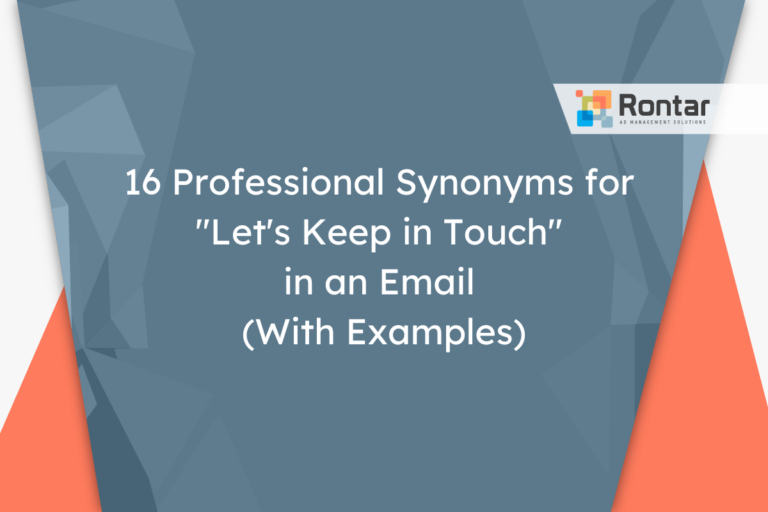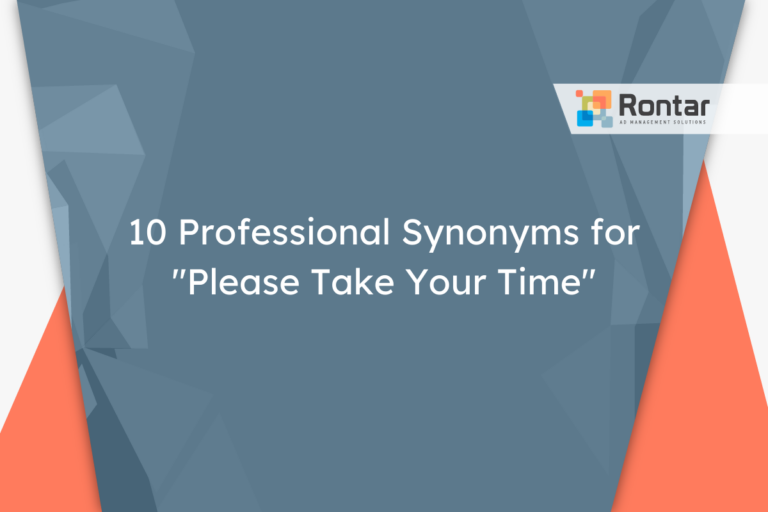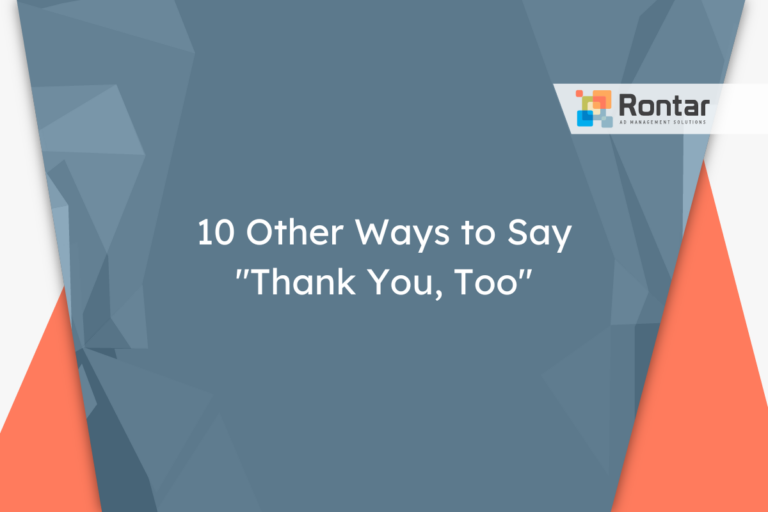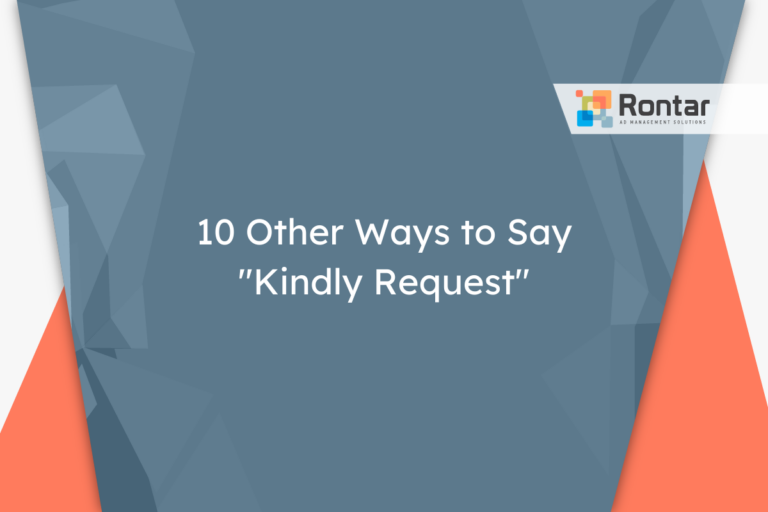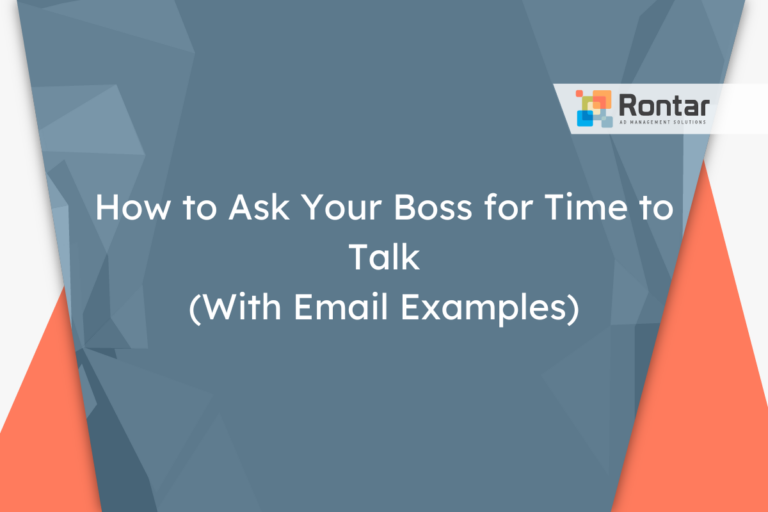16 Professional Synonyms for “Sounds Good”

Sometimes, “sounds good” doesn’t quite fit the bill, especially when you want to spice up your replies or sound more enthusiastic.
This article lists sixteen alternative phrases you can use to express agreement or approval in various settings, whether you’re chatting with friends or talking to colleagues. Each option is explained with examples to show how and when to use them effectively.
Is It Professional to Say “Sounds Good”?
When it comes to professional settings, the phrase “sounds good” is often considered polite, informal, and can be professional depending on the context. It’s a versatile phrase that conveys agreement or approval in a friendly manner. However, its appropriateness largely depends on the relationship between the people communicating, the situation, and the communication channel.
“Sounds good” is best used in situations where you have an established rapport with your correspondent or when the atmosphere is somewhat relaxed. It’s suitable for emails, instant messages, and verbal conversations among colleagues who know each other well. For more formal communications, or when addressing someone in a higher position whom you’re not familiar with, opting for a more formal phrase might be better.
Here’s an example of how to use “sounds good” in an email:
Hi Alex, Thank you for sending over the project timeline. After reviewing the dates and milestones, everything sounds good to me. I appreciate the clarity and detail you’ve provided. Looking forward to getting started on this, Emily
Pros:
- Conveys a positive and agreeable attitude.
- Helps maintain a friendly tone in communications.
- Appropriate for use among colleagues with an established rapport.
Cons:
- May be considered too casual in highly formal or traditional settings.
- Could be perceived as vague or lacking in professionalism by some recipients.
- Not suitable for first-time communications with senior professionals or external clients.
While “sounds good” is a widely accepted phrase in many professional settings, someone might want to consider an alternative phrase that better matches the formality of the situation.
16 Other Ways to Say “Sounds Good”
There are many ways to express agreement or approval in a conversation. Here are sixteen professional alternatives to “sounds good” that can be used in various contexts.
- Sounds great
- Agreed
- That’s fine
- Of course
- That works for me
- Sounds like a plan
- Absolutely
- No problem
- Sure thing
- That is acceptable
- That sounds like a good idea
- Fine by me
- Works for me
- I’d be okay with that
- That’s good for me
- We can make that happen
1. Sounds great
Compared to “sounds good,” “sounds great” has a slightly more enthusiastic tone. It’s a way to show a higher level of agreement or excitement about a proposal.
This alternative is particularly useful in both informal and semi-formal settings. It’s well-suited for email, chat, or in-person conversations where you want to convey a positive and supportive attitude. Whether you’re responding to a colleague, friend, or a casual business partner, “sounds great” fits well. It’s also a good choice for messages where you want to add a bit of warmth or enthusiasm.
Here’s an example of how to use “sounds great” in an email:
Hi Sarah, Sounds great. I'm looking forward to seeing how this develops and am eager to contribute to our shared success. Best regards, EmilyHi Emily, I have an idea for our next project that could benefit from both our teams. Are you interested in collaborating? Best, Sarah
2. Agreed
“Agreed” is a succinct way to show that you are on the same page with someone. It indicates a mutual understanding or a shared opinion.
This formal and professional alternative is perfect for business emails, meetings, and discussions where you need to quickly and clearly express concurrence. It’s especially fitting when dealing with superiors, colleagues, or in negotiations where clarity and agreement are crucial. “Agreed” is best used in contexts where the focus is on reaching a consensus or affirming a decision.
Here’s an example of using “agreed” in an email:
Dear Mr. Thompson, Agreed. We can proceed with the next steps as outlined. Kind regards, LauraHi Laura, Following our recent discussions, I propose we move forward with the next steps we outlined in our last meeting. Do you agree? Best regards, Alex Thompson
3. That’s fine
“That’s fine” is a more neutral response, indicating acceptance without a strong sense of enthusiasm. It’s a polite way to show agreement.
As an alternative, it’s best used in informal or semi-formal situations where the stakes are not particularly high. It’s suitable for conversations with peers or when responding to suggestions where you have little preference. This phrase works well in emails, chats, or in-person discussions where a simple affirmation is needed without the need for enthusiasm.
Here’s a sample email using “that’s fine”:
Hi Jordan, That's fine by me. See you then. Cheers, AlexHi Alex, Can we push our meeting to 3 PM on Thursday instead of Wednesday? Let me know if that works for you. Best, Jordan
4. Of course
“Of course” is a friendly way to express agreement or to grant permission. It suggests that the request or statement being responded to is reasonable or expected.
This phrase is informal and carries a warm tone, making it a great choice for conversations with friends, colleagues, or even in customer service situations. It’s ideal for use in emails, messages, or in-person interactions where you want to show your agreement without any hesitation. “Of course” conveys a sense of openness and willingness to cooperate or help.
Here’s how “of course” can be used in an email:
Hello Mike, Of course, that's absolutely fine. Let me know if you need any assistance. Best, SophieHi Sophie, Could we extend the deadline to next Wednesday? It's taking a bit longer than anticipated. Best regards, Mike
5. That works for me
“That works for me” is a casual and versatile way to agree to a proposal or plan. It indicates that the suggestion fits well with your own schedule, preferences, or requirements.
This informal phrase is great for discussions involving scheduling or planning, particularly with colleagues or in less formal business contexts. It’s perfect for emails, chat messages, or in meetings where you need to quickly show your approval of a time, date, or course of action without needing to be overly formal.
Here’s an example of “that works for me” in an email:
Hi Zoe, That works for me. Thanks for checking in! Best, LiamHey Liam, Can we move our meeting to Thursday morning? Best, Zoe
6. Sounds like a plan
“Sounds like a plan” is an enthusiastic way to agree with a proposed course of action. It shows not only agreement but also approval and readiness to proceed.
This phrase fits well in both informal and semi-formal settings, especially when finalizing details of a plan or proposal. It’s suitable for conversations with team members, friends, or casual business interactions. “Sounds like a plan” is great for emails or in-person discussions when you want to convey a positive attitude toward moving forward with a suggestion.
Here’s a sample message using “sounds like a plan”:
Hi Carla, Sounds like a plan. I’m looking forward to it! Warmly, EthanHey Ethan, Let's have lunch at the new Italian place on Friday to discuss the project. Best regards, Carla
7. Absolutely
Compared to “sounds good,” “absolutely” carries a stronger sense of enthusiasm and certainty. It’s a powerful way to show you’re completely in agreement with what’s been suggested.
This informal yet emphatic alternative is great for conversations where you want to express strong support or agreement. It’s suitable for use with friends and colleagues in a relaxed setting and in customer service to convey eagerness to assist. Whether through email, in person, or over the phone, “absolutely” injects a positive energy into the conversation.
Here’s an example of “absolutely” in an email:
Hey Jenna, Absolutely, Thursday at 10 works perfectly for me. See you then! Best, MarcusHey Marcus, Can we reschedule our meeting for 10 AM on Thursday? Best regards, Jenna
8. No problem
“No problem” implies that the request or suggestion made is easily achievable or not an inconvenience. It’s a laid-back response.
This phrase is commonly used in informal settings and is perfect for interactions that are casual or when you’re trying to convey a helpful and unbothered attitude. It’s excellent for emails to peers, chats, and in-person dialogue where you want to assure the other person that their request is manageable. “No problem” is polite and conveys a willingness to accommodate the needs or requests of others.
Here’s a message example using “no problem”:
Hi Tom, No problem, I'll review the report tonight and have my feedback to you by tomorrow morning. Cheers, LindaHi Linda, Would it be possible to get your input on the report by tomorrow? Regards, Tom
9. Sure thing
“Sure thing” is an informal expression of agreement, similar to saying “definitely” or “of course.” It’s friendly and reassuring.
This informal synonym works best in casual conversations or in work environments that encourage a relaxed communication style. It’s especially fitting for quick affirmations over email, chat, or in person when you want to assure someone that their request or suggestion is agreeable. “Sure thing” is a great way to respond to colleagues or friends in a positive and uncomplicated manner.
Here’s how you might use “sure thing” in an email:
Hi Felicity, Sure thing, I'll send them over within the hour. Best wishes, DerekHi Derek, Could you send me the files I asked for last week? Best regards, Felicity
10. That is acceptable
“That is acceptable” is a more formal and neutral way of agreeing. It suggests consent without expressing enthusiasm.
This formal alternative is suitable for business contexts where you need to maintain a professional tone. It’s ideal for emails or meetings with clients, superiors, or any situation that calls for a reserved expression of agreement. “That is acceptable” communicates your approval while keeping the conversation on a strictly professional level.
Here’s an email example:
Hello Dr. Simmons, That is acceptable. Please ensure that no further delays occur. Regards, ElizabethHello Elizabeth, Would it be possible to extend the project deadline by two days? Best regards, Dr. Eric Simmons
11. That sounds like a good idea
This phrase is a bit more enthusiastic than just saying “Sounds good.” It shows that you really think what’s been suggested is a smart move.
This alternative is great for both informal and semi-formal settings, like chatting with a colleague or responding to a suggestion in a meeting. It shows you’re not just agreeing but that you’re also impressed with the idea. It’s perfect for emails, meetings, or casual conversations when you want to positively reinforce someone’s suggestion.
Here’s a sample email:
Hi Kevin, That sounds like a good idea. Let's discuss further steps in our next team meeting. Best, AmandaHi Amanda, I suggest adjusting our project timeline to improve efficiency. Can we discuss this at our next team meeting? Best regards, Kevin
12. Fine by me
This is a relaxed way to agree with something. It’s casual and shows you’re easygoing about the suggestion or plan.
Use this informal synonym in casual work emails or with friends when you’re making plans. It’s a great way to show you’re agreeable without making a big deal out of it. This phrase fits well in messages or conversations where the atmosphere is laid-back and decisions are not critical.
Here’s an example email:
Hey Maya, Fine by me. Just confirm with our manager. Cheers, JakeHey Jake, Can we switch shifts this Friday? I've got an appointment and can't make my usual time. Let me know if that works for you. Thanks, Maya
13. Works for me
This phrase is another casual, easy-going way to agree with a proposal or plan. It’s like saying, “That fits into my plans or preferences.”
This alternative is suitable for informal conversations or emails, especially when discussing arrangements or plans that need everyone’s approval. It’s perfect for communicating with colleagues or friends in a way that’s straightforward and cooperative.
Example email:
Hi Beth, Works for me. See you then. Regards, TomHi Tom, Can we confirm our meeting for 10 AM next Tuesday at the downtown office? Best wishes, Beth
14. I’d be okay with that
This response is a bit more on the tentative side, suggesting you’re fine with the proposal, but perhaps not overly excited about it.
It’s a polite, somewhat informal way to show agreement, especially when you want to convey flexibility or lack of strong preference. This phrase is good for emails and conversations where you’re being asked for approval and you have no strong objections.
Example of use in an email:
Hi Lila, I'd be okay with that. Let's ensure everyone else is on board. Warmly, SeanHi Sean, Given the recent closure of our usual spot, how do you feel about trying the new Greek restaurant for our team lunch this month? Best, Lila
15. That’s good for me
Similar to “works for me,” this phrase shows agreement from a personal standpoint, indicating that the plan or idea fits well with your own schedule or preferences.
This informal alternative is great for discussions about scheduling or personal preferences. Use it in emails, chats, or in person when you need to agree to a proposal that directly affects you.
Example in an email:
Hi George, That's good for me. Thanks for letting me know. Best, EmilyHi Emily, I wanted to let you know that the project deadline has been moved to next Friday. Does that work for you? Best regards, George
16. We can make that happen
This phrase is proactive and positive. It shows not only agreement but also your willingness to put in effort to realize the plan or idea.
It’s an excellent alternative for professional settings, especially when you want to convey a can-do attitude. Use this in emails or meetings when discussing plans or proposals that require action or collaboration. It shows you’re not just agreeing but also committed to making things work.
Example email:
Hi Alex, We can make that happen. Let's regroup and assign tasks. All the best, CarlosHi Carlos, Given our discussion on project deadlines, do you think it's feasible to expedite our timeline by two weeks? I believe with some adjustments, we can meet this new target. Regards, Alex
Final Thoughts
Choosing the right way to say “sounds good” can make your conversations more interesting and show your personality. The alternatives we’ve shared are great for different situations, from casual talks with friends to more formal emails at work. By using these options, you can ensure that your response perfectly fits the mood and setting.

